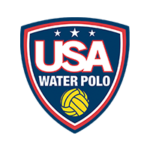Volleyball Scholarships: WhaT College-Bound Volleyball Players Should Know

Getting a college volleyball scholarship is the ultimate goal of the recruiting process for most families. Who wouldn’t want to get their education paid for while playing the sport they love? The good news is that there are approximately 1,800 college volleyball programs across the country, with hundreds of volleyball scholarship opportunities. Here, we explain the volleyball scholarship requirements and answer families’ most-asked questions about getting college volleyball scholarships.
Quick Links
Can athletes get a scholarship for volleyball?
Yes! There are plenty of college volleyball scholarship opportunities for talented high school athletes at the NCAA Division 1 and Division 2 levels, as well as at NAIA schools and junior colleges. To snag a volleyball scholarship, athletes must demonstrate to the coach that they would make a positive impact on the success of the team throughout their four years in college.
Number of women’s volleyball scholarships by division level
| Division Level | Number of Teams | Total Athletes in Division | Average Team Size | Scholarships Limit Per Team | Scholarship Limit Type |
|---|---|---|---|---|---|
| D1 | 341 | 13,597 | 39.9 | 12 | Headcount |
| D2 | 266 | 8.107 | 30.5 | 8 | Equivalency |
| D3 | 350 | 9,771 | 27.9 | N/A | N/A |
| NAIA | 217 | 3,859 | 18 | 8 | Equivalency |
| JUCO | 313 | 3,921 | 13 | – | Equivalency |
Volleyball scholarship requirements
Athletes must meet both athletic and academic criteria in order to get a volleyball scholarship. The athletic criteria are largely up to the volleyball program at each individual school. Every coach has different methods for determining which athletes are right for their roster, which is why the recruiting process is so crucial. If an athlete isn’t sure what a college coach looks for athletically in their position, check out the roster. Look for the height, stats and accolades of a current athlete in your position. Or, better yet, the athlete can send the coach an email to ask.
The NCAA Eligibility Center has specific academic requirements that athletes must meet to be eligible to compete at either the NCAA Division 1 or Division 2 levels. We’ve included the Division 1 requirements below. A good rule of thumb is that if an athlete meets or exceeds the D1 requirements, they will be eligible at the D2 level as well. However, always bear in mind that each individual school has its own set of admissions requirements that athletes will also have to meet.
- The athlete must graduate from high school.
- They must complete 16 core courses and receive a minimum GPA of 2.3 in those courses. The core course requirements are as follows: four years of English; three years of math (Algebra 1 or higher); two years of natural or physical science; two years of social science; one extra year of English, math or science; and four years of religion, philosophy, foreign language or additional years of any of the categories above.
- Athletes need to complete 10 of their 16 core courses before junior year of high school.
What percent of high school volleyball players get college scholarships?
Around 5.9% of high school volleyball players will compete at the college level, and 1.2% of high school volleyball players will go to a Division 1 school. This translates to about 27,400 collegiate women’s volleyball players competing at all division levels across the U.S.
However, of those approximately 27,000 women, it’s difficult to know how many of them are scholarship athletes. While some schools are fully funded—able to provide the maximum number of scholarships to their athletes—many other schools are not. Furthermore, some athletes are walk-ons and don’t receive any athletic scholarship money.
How many scholarships do Division 1 volleyball teams get?
Division 1 volleyball teams can offer a maximum of 12 full-ride scholarships. Because D1 volleyball is classified as a headcount sport, every scholarship the coach gives out must be a full ride. Which means all scholarship athletes on a D1 volleyball team have a full ride to that school. The rest of the athletes on the team are considered walk-ons, or athletes who don’t receive any athletic scholarship money to play their sport.
How many volleyball scholarships are given each year?
It’s very difficult to quantify how many volleyball scholarships are given out each year. As mentioned earlier, some programs are fully funded and can give out the maximum number of scholarships, while other programs can only provide a portion of the maximum amount. This makes it really difficult to track how many scholarships have actually been given.
Furthermore, knowing how many scholarships are given out is a misleading number. Scholarship numbers are heavily reliant on each individual school’s cost of tuition. For example, a full-ride scholarship at a less expensive state school is going to equate to less money than a full-ride scholarship at a pricier private school. When looking at how many scholarships are given out, the variations in cost of tuition aren’t accounted for.
When families are trying to gauge how “good” a scholarship offer is, they need to look at the Expected Family Contribution, or how much they are expected to pay out of pocket. This will help them compare different offers and evaluate if the scholarship provides enough financial support for the athlete to attend the school for four years.
Which colleges give volleyball scholarships?
There are approximately 1,802 schools that field a women’s volleyball program. A large number of these programs will have at least some scholarship dollars, used to attract top talent to their team. However, it’s nearly impossible to know how much money each individual school has to offer—this will be up to each program, and it could change from one year to the next. The best way to determine if a program provides volleyball scholarships: Start communicating with the coach. After the athlete develops a relationship with the coach and is getting serious recruiting interest, they can bring up the topic of college volleyball scholarships.
















